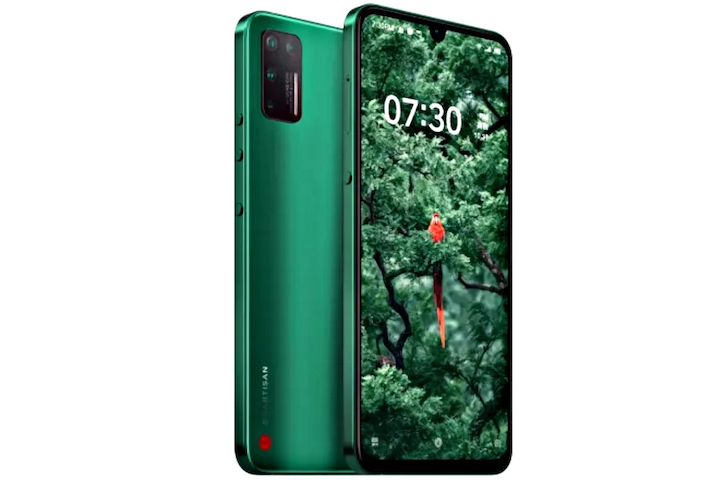Bytedance and Kakao have both launched branded smartphones, reviving a trend not seen for a few years: Social companies pushing their wares on mobile hardware. If you’re not familiar with the names of these two firms, you may know the software produced by both: Bytedance owns social video sensation TikTok, which Kakao operates KakaoTalk, South Korea’s No. 1 instant messenger app.
The TikTok phone

The TikTok phone, as it will inevitably be known, is actually the Smartisan Jianguo Pro 3. Bytedance purchased patents from Chinese smartphone brand Smartisan earlier this year, and then revealed it had been working on a smartphone project for a while. The TikTok app, which is known as Douyin in China, comes preinstalled on the new phone, and is accessed using a swipe on the home screen.
Smartisan and Bytedance’s phone has good specifications too. It has a 6.4-inch AMOLED screen, a Qualcomm Snapdragon 855 Plus processor, and a 20-megapixel selfie camera. On the back is a quad-lens camera consisting of a 48-megapixel main lens, a 13-megapixel wide-angle lens, an 8-megapixel telephoto lens, and a 5-megapixel macro lens. Smartisan has been around for several years, but has not made a big impact outside of China. It launched the Jianguo Pro 2 in October 2018.
The Smartisan phone is so far only announced for China, but the popularity of TikTok internationally means there may be some demand for the device elsewhere. However, given the availability of the app, Smartisan’s lack of presence outside China, and the wealth of other smartphones to buy, it seems unlikely the Jianguo Pro 3 will see a wide global release.
The Kakao phone

Kakao’s phone, called the Stage 5G is a very different proposition to Bytedance’s phone, as it goes all-out in delivering Kakao’s services to the phone’s owner. It’s specifically made to enable fast, convenient use of not just KakaoTalk, but Kakao Pay; Kakao’s navigation app; its audio, video, and book service, Kakao Page; and plenty more. All these apps will be directly accessible from the phone’s lock and home screens, without the need to add them.
The phone’s name also gives away the other big feature: 5G connectivity. Kakao partnered with its own telecoms subsidiary, Stage Five, and with Chinese manufacturer ZTE to make the phone, which costs less than competing
Like the Smartisan phone, the Stage 5G is unlikely to be sold outside South Korea.
The past is not friendly
Smartphones created to push certain social services are not new. Probably the best known before now are the so-called Facebook phones, the 2011 HTC Status and the 2013 HTC First. These phones came with either a hardware button to access Facebook, or the
Facebook’s Home launcher was also made available through Google Play to turn any Android phone into a Facebook phone. Microsoft made its own multiservice social networking phones, called the Microsoft Kin, in 2010. Snapchat was rumored to make a smartphone before it came out with the Snapchat Spectacles.
None of these older examples were popular; but with the rise of gaming phones and other niche device types, and the massive popularity of services like TikTok, the new wave of social phones may find their place.
Editors' Recommendations
- Worried about the TikTok ban? Here are 5 TikTok alternatives you should use
- TikTok sues Montana in bid to overturn statewide app ban
- TikTok faces outright ban in first U.S. state
- TikTok’s STEM feed is fine, but it fails to address the app’s biggest issues
- Spotify gets first major redesign in 10 years with TikTok-like scroll



